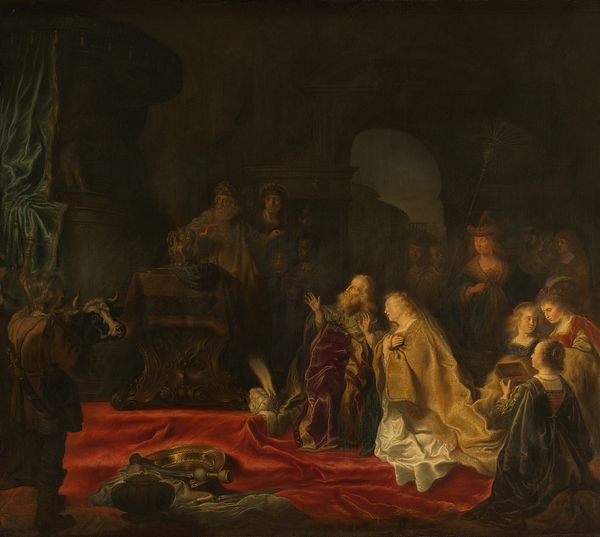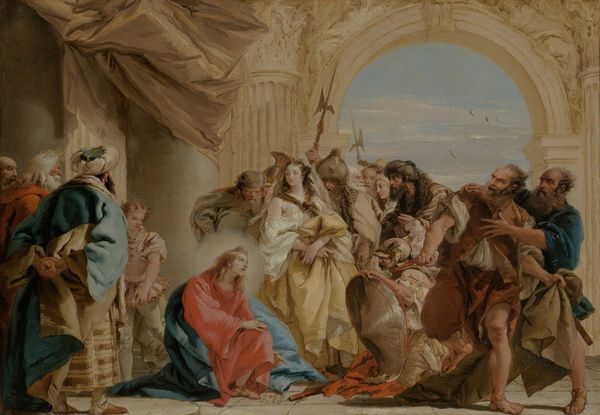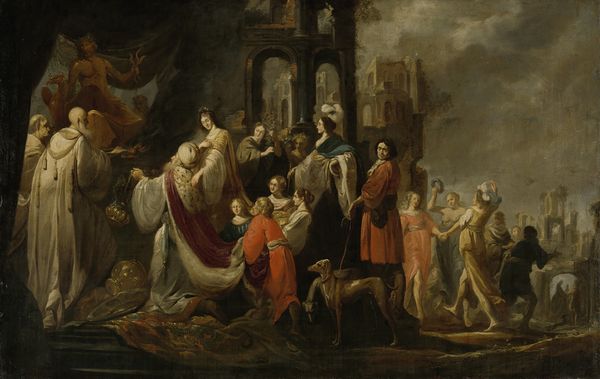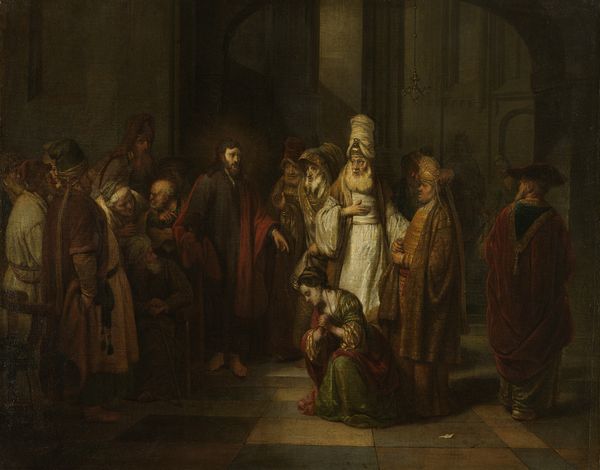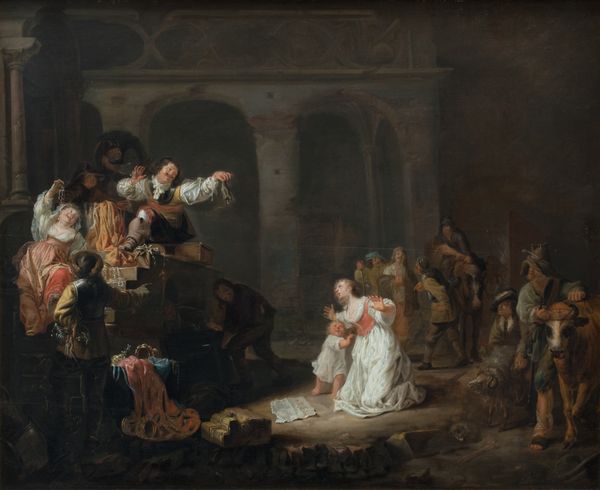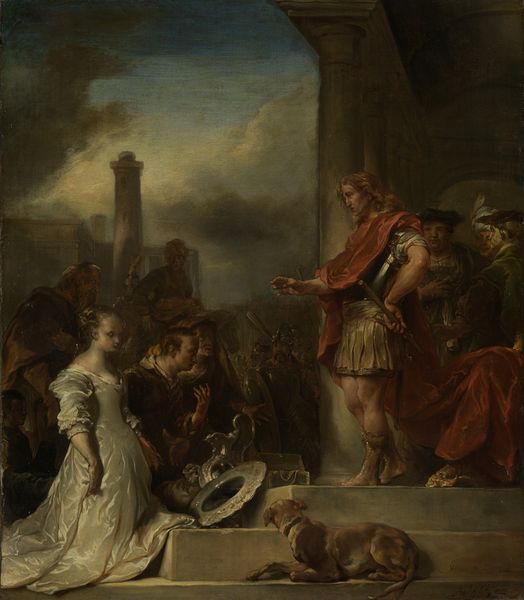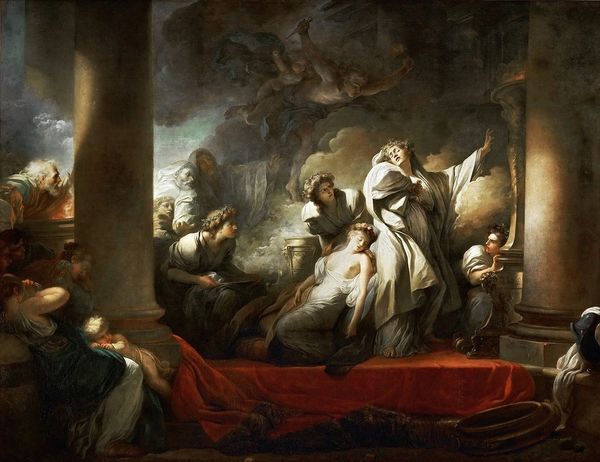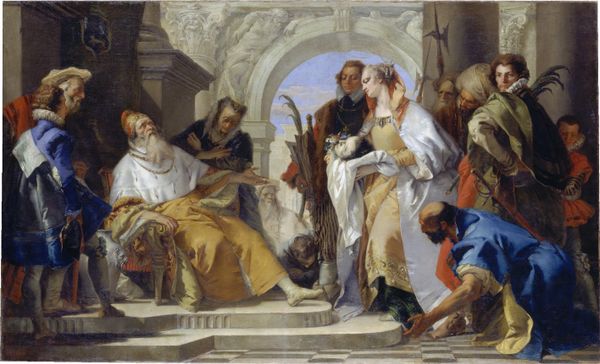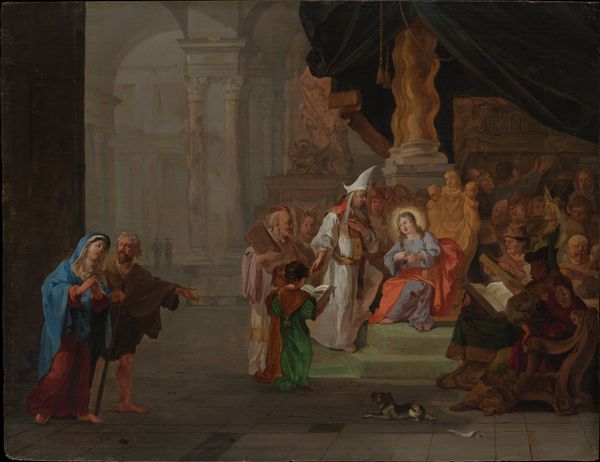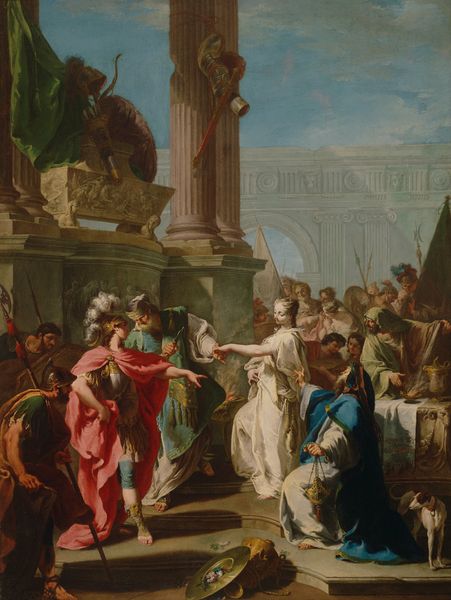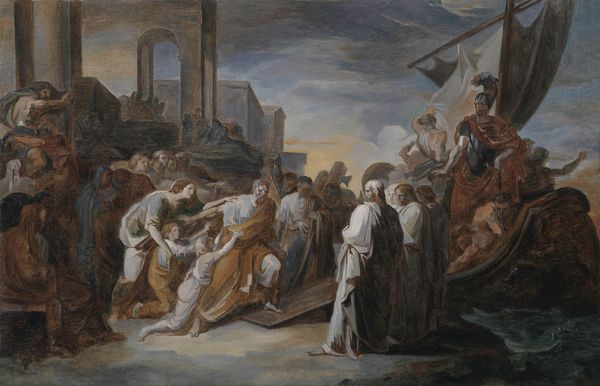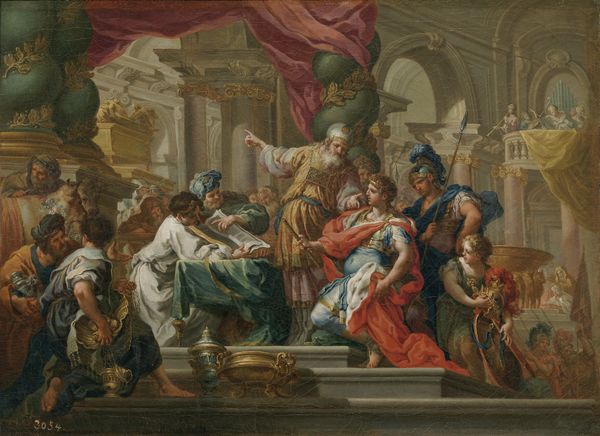
painting, oil-paint
#
narrative-art
#
baroque
#
dutch-golden-age
#
painting
#
oil-paint
#
figuration
#
history-painting
Dimensions: 21 1/2 x 31 1/2 in. (54.61 x 80.01 cm) (sight)30 1/4 x 40 1/2 in. (76.84 x 102.87 cm) (outer frame)
Copyright: Public Domain
Curator: Looking at Willem de Poorter's "St. Paul and St. Barnabas at Lystra," painted around 1636 and housed here at the Minneapolis Institute of Art, I’m struck by how dramatically he stages this biblical scene. Editor: The dark palette lends this a weighty gravity, wouldn't you agree? You immediately notice the stark contrast between the darkened architecture and the bright figures down front offering ritual objects. You can almost feel the tension, a sense of brewing conflict. Curator: Precisely! It's Baroque drama at its finest. De Poorter uses this episode from the Acts of the Apostles to reflect the complex dynamics between different beliefs in 17th century Netherlands. Think about how narratives from the Bible could be reshaped for local audiences. Editor: And he's crafted a rich materiality. I’m fascinated by the textures: the smooth sheen of the ceremonial vessels, set in the painting’s foreground. It appears to be rendered with almost unsettling detail compared to the figures in the distance. The contrast is a visual representation of the spiritual wealth sought after and what lengths these people will go to secure it. Curator: Yes, the emphasis is significant! De Poorter made paintings for the well-to-do class of merchants and traders and these pieces often showed wealth through fine objects, a visual indication of cultural power that mirrors biblical narratives. But, going back to the central moment depicted, the artist chose to highlight the turning point when the saints refused worship, challenging the religious practices of the community. Editor: These figures at the front really grab your eye; who do you think they may be offering these sacrifices for? I almost missed the statue until you had mentioned it, obscured in darkness. It almost seems the artist did that intentionally to divert attention. Curator: The sacrifice would be made for Zeus and Hermes and yes, Poorter obscures them so the main event can be St. Paul and St. Barnabas halting this supposed idolatry. Dutch Golden Age painters commonly reworked biblical themes to consider the Protestant resistance against Catholic orthodoxy or in some cases pagan rituals. Editor: In examining Poorter's use of pigment and form, especially concerning labor of representation within the image, one gleans into the artistic production's interaction with socio-political discourse. What are your concluding thoughts on what it conveys? Curator: The painting's enduring power comes from the drama embedded within the frame—an ongoing struggle of belief that transcends the moment, resonating in the socio-religious fabric of its time. Editor: A fantastic and complicated look at religious sacrifice! Its Baroque drama and material execution invite the modern eye to a captivating study on labor, wealth, and sacrifice.
Comments
No comments
Be the first to comment and join the conversation on the ultimate creative platform.
